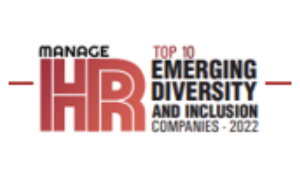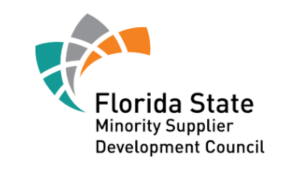In the workplace, the definition of DEI is expanding. It’s not about reaching certain demographic quotas or professing blindness to difference. Instead, it’s about understanding the importance of your employees’ intersecting identities, honoring differences, and rooting out the effects of systemic inequity hidden in company cultures.
Organizations with diversity, equity and inclusion strategies have increased job satisfaction amongst employees, increased levels of trust, and higher engagement levels. Not only do DEI strategies lift morale and overall attitude on an employee level, but they also provide a multitude of benefits that can be seen at every level of the business.
A well-led DEI strategic plan helps every employee to show up each day without fear that they can’t be their true selves.
Despite these benefits, very few organizations know what steps to take to create and foster sustainable success. To reap and maintain success from DEI, it is necessary to invest in a wider variation of talent, who have broader knowledge, experience, and expertise to match our complex global environment.
Three Must-Haves for an Effective DEI Program
Every organization is unique and so you must tailor expectations to fit with what is reasonable to accomplish, now and into the future. The most effective DEI programs will include steps like these.
- Set your ambition and assess where you stand on the DEI continuum
The first step is often the hardest and asking some critical questions can lead to helpful discoveries. Consider: How committed is your organization to starting on this journey? What are you trying to accomplish and why? What is a reasonable starting point? Have you already taken steps? What worked or didn’t work? Don’t be discouraged if you are behind other organizations. Be patient and remember that incremental progress is often the best way to create lasting change.
- Develop and implement a plan that creates ongoing engagement
The right kind of plan is essential. The key here is to have a plan that leans into ongoing engagement, not a one-time effort. Conduct a cultural audit and/or DEI assessment to get data before getting started. Consider a multi-year plan that is annually refreshed and refined. Start your plan with what is easiest to accomplish and prepare to tackle more complex challenges in an incremental way. A must-do priority: create ongoing engagement with managers, as they are essential to DEI success. That includes prioritizing their education and training. And as you look at the organization broadly, determine how you can adjust workplace policies for bias and what else you can accomplish, such as mentorship, allyship, anti-racism, and inclusive leadership., now and into the future.
- Create a safe environment for self-discovery and reflection
Change can be difficult, and people need a safe environment to enable self-discovery and reflection. Research from HBR indicates that team psychological safety may hold the key to unlocking the benefits of diversity. Create psychological safety for employees by being clear that there will be no shaming and blaming—and that everyone benefits from inclusivity. Feeling safe is the antidote to fear, which is often at the heart of resistance to change. Be clear that no one will be forgotten or left behind. Inclusivity means that everyone is understood, appreciated, and valued.

The Key to Sustainable DEI? Consistency and Accountability
Demonstrating the effectiveness of DEI is more important than ever. Not only is DEI central to employee well-being, but it’s also essential to creating a thriving organization. DEI is increasingly used as part of demonstrating the “social” aspect of your ESG (Environmental, Social, and Governance) goals—which investors consider in identifying a company’s risks and growth opportunities. DEI also has implications for greater revenue potential. Consider research from the Boston Consulting Group showing that more inclusive companies achieve 19 percent higher revenue than their less inclusive counterparts.
How to Create an Effective & Sustainable DEI Strategy
- Set a solid learning foundation: Deploy an annual training program to set a solid foundation for learning. This will enable you to create an even platform from which to share knowledge in a consistent way.
- Reinforce training with complimentary initiatives: Education and training are a critical piece of the DEI strategy, but they are far more powerful when combined in a variety of other year-round activities. A Wharton study by researcher, Stephanie Creary revealed two powerful DEI practices, 1) Prohibitive voice: speaking out against bias and calling out DEI issues, and 2) Promotive voice: speaking up to improve DEI in hiring processes and practices. In both cases, education, and training features prominently in accomplishing these practices.
- Take steps to remove bias from workplace processes and policies: The initiatives above need one more critical component: removing bias from existing workplace policies and processes. That includes adjusting recruitment, hiring and promotion practices, setting key performance indicators that support DEI, reconsidering superfluous policies that create unnecessary barriers, as well as promoting, standardizing, and codifying new practices that reinforce behavior change. All of these adjustments will help to tackle the “equity” part of the DEI equation, which is critical to creating real, lasting, and transformative change.
- Create a feedback loop for managers and employees: By creating regular touchpoints between annual training and other DEI activities, you will open the door to supporting ongoing reflection and learning. You will also be in a position to enable peer-to-peer interactions that advance new ways of thinking and behaving. Feedback loops are best when they are a combination of formal touchpoints, such as surveys and pulse-checks, as well as informal and ongoing discussions, like manager and employee connections. For the latter to be effective, managers must be armed with the tools and strategies they need to address delicate and difficult questions.
- Require Accountability: Accountability is key for many reasons. Here are a few.
- It creates an expectation – personally and company-wide
- Responsibility means we take ownership of DEI delivery; accountability is the condition in which executives create an expectation of what to expect and create a connection between employees and those responsible for delivery. It also embeds transparency, because we’re being open about what we’re going to do and how we’re going to do it.
- Being purposeful about transparency is crucial. Assuming everyone knows what is happening is lazy.
- Be deliberate. Share who is responsible, what they are doing, when and why.
Charlotte Hughes is CEO of Inclusive Leaders Group, LLC a Black woman-owned boutique strategic consulting and training firm specializing in DEI as a business strategy. Charlotte provides, strategy development, allyship training, inclusive leadership development, and keynotes.










